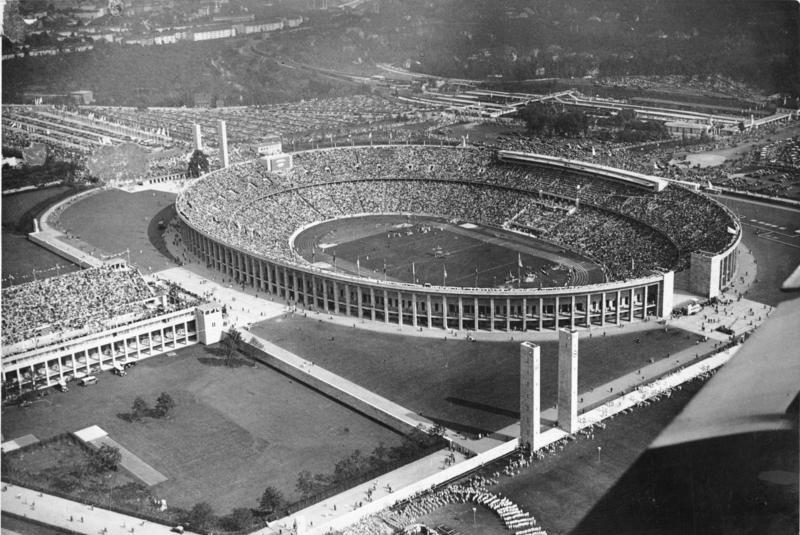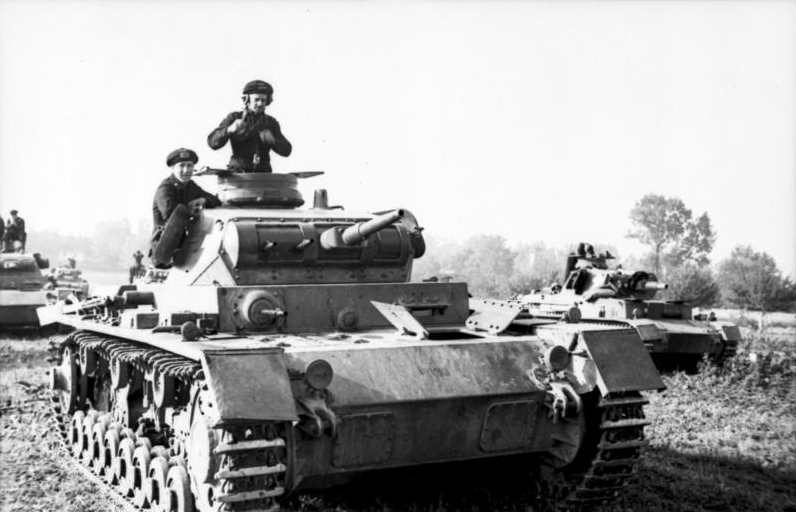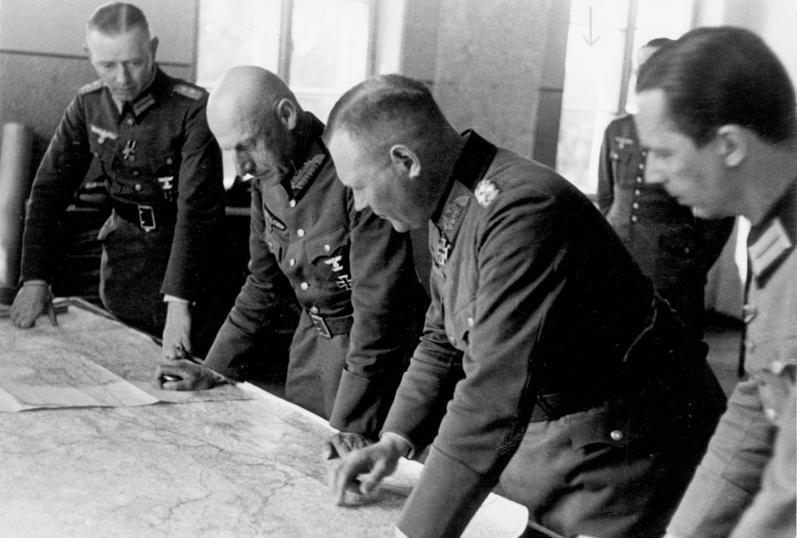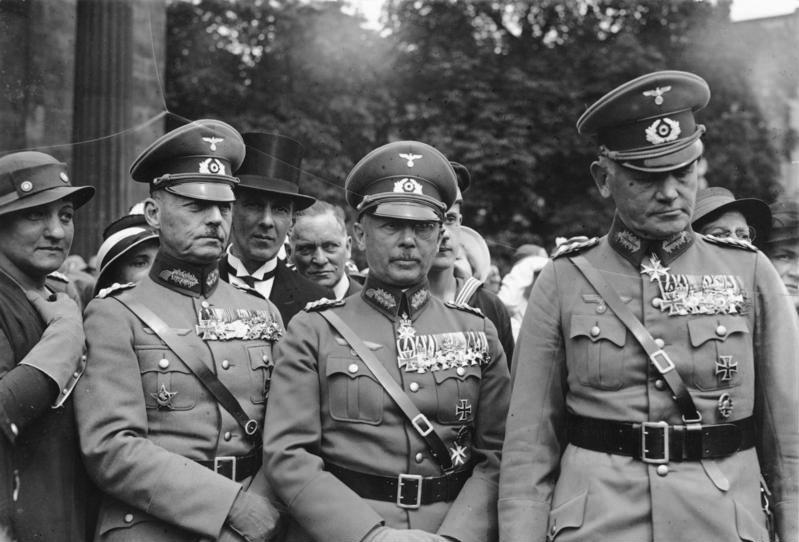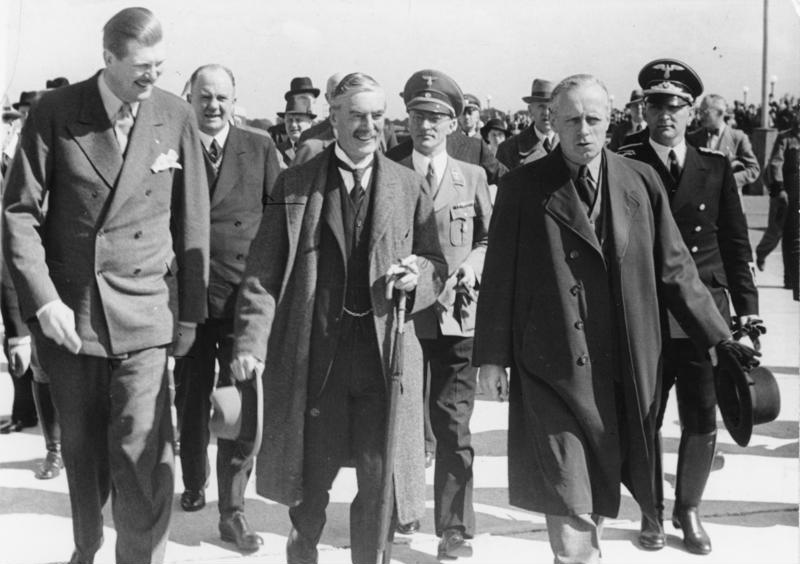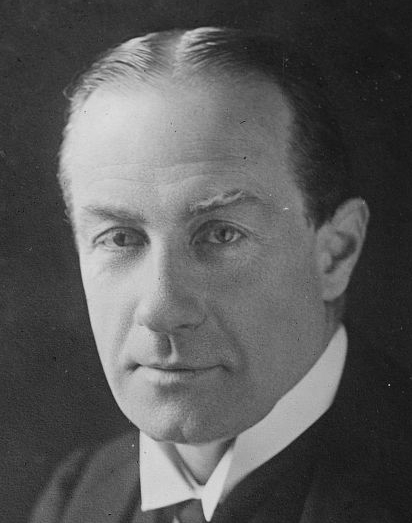Personnel Decisions (Continued)
It was a very unhappy Fuehrer that came to the first cabinet meeting of 1936. He had spent much of the previous two weeks mediating disputes in priorities between conflicting ministries, and this was clearly on his mind as the Reich Cabinet gathered on that wintry January morning.
The Chancellor and Fuehrer laid down a comprehensive plan for government reform by dividing the cabinet into sub-committees. The two primary committees were the War Cabinet (
Kriegskabinett - trans.) and the Economics Cabinet (
Wirtschaftskabinett), though there was an additional Cultural Cabinet (
Kulturkabinett) concerned with education and culture, answering to Minister Goebbels, and a number of ministers who did not answer specifically to any of the cabinets, but governed areas of specific importance to the Reich.
The War Cabinet was headed by the War Minister, at the time General von Blomberg, and included the heads of the Heer, Reichsmarine, Luftwaffe, and SS in their role as police, the heads of the Reich's security organs, and the Foreign Minister. The War Cabinet assumed the roles of the Kaiser's Army and Navy Cabinets, and its military components were responsible for planning any war which Germany might prosecute. To this end, they assumed the functions of the Kaiser's General Staff, albeit encompassing all of the services.
If General von Blomberg gained from his promotion to Field Marshal and the expanded power of the War Minister, he lost his influence on the Reich's economic planning. His replacement as the most influential voice on economics was taken by Franz-Xaver Schwarz, the Party Treasurer and the new Economics Minister, assisted by General Goering and Konstantin Hierl, the Reich Labor Leader at the ministerial level.
Minister Schwarz and Field Marshal von Blomberg became, at a single stroke of the Fuehrer's pen signing the Fuehrer Order, powers of the first rank alongside Himmler and Goering in the complex structure governing Germany. At least in 1936, they agreed with the Fuehrer that the immediate task facing Germany was rearmament and a military restructuring. Within 48 hours, orders flew out from the Economics Ministry, ordering the modernization of all facets of German industry. For his part, the War Minister ordered his subordinates' focus first on expanding their units to full training and proficiency before expanding the Reichswehr as a whole.
The Fuehrer's reorganization of the upper echelons of the Reich's government made many in both Party and Ministries nervous. Among the other orders emanating from Berlin early in 1936 was a categorical subordination of the police and all of the extrajudicial organs which had proliferated from the January 30th Revolution to the Justice Ministry under Franz Guertner. This was greeted with protest by Himmler, Heydrich, and Interior Minister Wilhelm Frick, but this criticism was stifled by the Chancellor and Fuehrer's blunt statement that they could either accept the situation, or face investigation of their role in the extrajudicial system - charges which, it was not lost on Heydrich and Himmler especially, had been leveled at Ernst Roehm.
Figure 39: The most influential voices in the Reich Cabinet of January 1936
The Fuehrer had a separate meeting with Himmler, Heydrich, and the chief of military intelligence, Rear-Admiral Wilhelm Canaris. The Reich's intelligence situation, these three reported, was dire: they had essentially no intelligence system to mention outside of the Party's internal organs. Canaris drew a bleak picture of the Reich's intelligence apparatus, which the Chancellor overrode, ordering the intelligence organs into immediate operation in gathering information for the Eastern Question.
Minister Schwarz, meanwhile, began a series of measures meant to stimulate Germany's economy and strengthen German industry. According to an internal memorandum circulated from Schwarz to the leaders of the firms Krupp, Thyssen, Siemens, and Dr. Hjalmar Schacht of the Reichsbank (who, according to contemporary accounts, was deeply offended that he was now receiving his marching orders from a "jumped-up Swabian records-clerk with no French"):
... The goal of German industry must be the speedy production of quality goods. To this end, I wish to streamline such industries as coal and steel production, and to place the strictest quality controls upon German products, especially those which must find their way overseas, such as automobiles. In order to become proud, German industry must first be humble: we must learn from the Americans and their production methods...
Schwarz, who had spent the pre-January 30th years as the Party treasurer and the ultimate voice in the Party's money matters, received General Becker of the Army's munitions research program on January 3rd, his third day in office. Becker asked Schwarz to consider the usefulness of large-scale calculating machines, geared to handle increasingly complex tasks - in short, to fund the work of Konrad Zuse, who was by now working for Becker in the basement of the Artillery School. Schwarz, as an old clerk, immediately saw some of the potential implications of Zuse's machine, and agreed to provide funding.
Figure 40: Reich research in 1936 focused exclusively on industrial applications.
As Schwarz ordered that German industry be restarted, von Blomberg took advantage of new conscription laws to begin the expansion of the Reichsheer's divisions to their full wartime strength. He received recommendations from each of the service chiefs, though he paid scant attention to General von Fritsch's memorandum on the strength of the Army - he had, after all, written the same report himself six months ago. From Admiral Raeder of the Reichsmarine, he received recommendations to establish a submarine school in direct contravention of the Versailles restrictions, and to scrap the two aging battleships
Schlesien and
Schleswig-Holstein in favor of two modern battlecruisers; the two old cruisers were indeed so maintenance-intense that they were kept docked the majority of the time. The orders went forth, the hulls were decommissioned, and the Reichsmarine began its rebirth. The recommendations from General Goering were much more difficult to deal with: Goering wished to raise an infantry division for each of the Reich's major airports, and to deploy a Luftwaffe of fifty wings. Blomberg was willing to compromise and allow the expansion of the Reich's air infrastructure; a construction program would, after all, provide work for many Germans.
January and February were busy months in Berlin, but it would be difficult to see it from outside. Krupp Petrochemie, a subsidiary of the Essen steel firm, made inroads into Germany's continuing oil supply problem, but that was, again, far from the heart of the Reich. Siemens conducted radio experiments at research stations around the Reich's periphery, again out of sight. And in the basement of the Artillery School on Unter den Linden, relays clicked and whirred as Zuse continued his construction, out of sight of the world.
On February 27, the French and Sowjets announced that they had signed an accord, explicitly directed against the Reich. The Chancellor and Fuehrer was furious: the Reich's intelligence organs had given no warning. By the evening of Feburary 27, he had sent for Admiral Canaris and given him new orders, to proceed, as
Kapitaen zur See Canaris, to assume command of the naval signals school in Kiel. His replacement was Major-General Eugen Ott. Ott had once been General Kurt Schleicher's personal adjutant, and had been the General's liaison with the future Chancellor in 1932-1933. Most recently, he had served in Tokyo as the military attache, a post he had filled since the death of President Hindenburg. Ott was, by all accounts, surprised by his recall, and the Japanese were suspicious of the sudden personnel change. They were only mollified by an extended personal telegram from the Fuehrer on the assassination of Prime Minister Saito.
The Chancellor also ordered the mobilization of two battalions of military engineers and police for dispatch into the Rhineland, an act which he privately admitted was more symbolic than effective. On March 7th, for the first time in almost twenty years, German troops entered the Rhineland. The following week was tense, but slowly the diplomatic response flowed in: Belgium congratulated Germany on "restoring her national dignity," in the words of King Leopold. France predictably claimed that the Franco-Sowjet Pact was strictly a defensive measure and that Germany had nothing to fear. Perhaps most ominously, a Sowjet cruiser docked in the IJsselmeer.
Figure 41: The Soviet cruiser Kirov, which visited the Netherlands in 1936
The remainder of the spring of 1936 passed without event; the Siemens firm invested extensively in hydroelectric dams in Afghanistan and Hjalmar Schacht of the Reichsbank proposed a radical revision of the Reich's monetary policy; Minister Schwarz considered it in great depth before approving Schacht's proposal with stiff restrictions and the elimination of the 1920s-era
Rentenmark unofficial currency. Perhaps the most significant development of the year was the dispatch of a German military mission to China under Major-General von Falkenhausen. Officially their role was to advise and train Chiang Kai-Shek's nationalist army; unofficially their role was to test the next generation of the Reichswehr's equipment. They would spend three years in China, personnel rotating out as needed.
As German industry recovered, so too did German arms: the Luftwaffe received six of the fifty fighter squadrons for which General Goering had begged in the summer, and six more by winter. They were, admittedly, hopelessly outdated compared to the design which had surprised the world when it had overflown Berlin in 1935, but Messerschmitt continued to have problems with the revolutionary new fighter he was developing. More important, internationally, was the construction of DRMS
Bismarck. The battleship was conceived and built in direct contravention of the Anglo-German Naval Agreement of 1935; once again, the Chancellor and Fuehrer called up the specter of the Franco-Sowjet Pact, and the Russian cruiser in Amsterdam.
Figure 42: Germany's security demanded that the Anglo-German Naval Agreement be abrogated.
We must protect the sacred integrity of Germany at all costs, even at the risk of alienating our friends in Britain. What use is it if our British cousins agree that we shall be restricted to a set fleet size, yet the French and Sowjets conspire to send battleships to our very doorstep? No, I say to you, with the best goodwill towards our British neighbors, so long as we are bound on all sides by enemies, our agreement is no more than a scrap of wet paper.
Within a week, however, international reaction to Germany's naval rearmament was overshadowed by war in Spain.
Germany's reaction to the Spanish Civil War was immediate. As with General von Falkenhausen in China, the Luftwaffe began to form a military mission for dispatch to the Iberian Peninsula; even before the Luftwaffe mission was fully assembled, Minister Schwarz made a quiet economic deal: five thousand tons of military supplies, in exchange for three thousand tons of raw ores. The shipment proved far more prescient than the military mission - on August 13, 1936, the Nationalist government in Burgos surrendered to the Republicans.
Once again, the world's eyes turned to Berlin; three days after the news from Spain, the 1936 Olympics began. Germany won more medals in all categories than any other nation, and the unfounded fears among her neighbors that she would invade at any moment slowly receded.
Figure 43: Berlin's Olympic Stadium, 1936
Meanwhile, in the Artillery School basement, Zuse's engineers completed the Z3, a fully realized version of his mechanical computer, and turned its power on the diplomatic codes of Germany's neighbor Poland.
---
... And here I got a CTD, right after witnessing what I can only think of as "Third World Madness." The Allies versus Nicaragua versus Japan in a three-sided brawl which can only end badly for the poor Nicaraguans. Let's hope the madness doesn't permeate the autosave...






